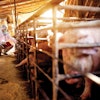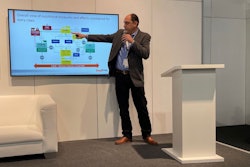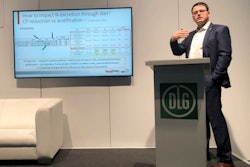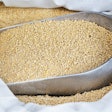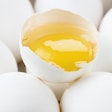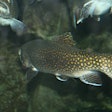
Feed formulation has never been so complex. Which ingredients are available to use, and do we need to adapt inclusion rates?
Shortage of major raw materials and some feed additives is leading to price increases for animal feed and subsequently overall production costs for farmers and food prices for consumers.
For poultry nutritionists and purchasers, it’s a daily challenge around what to keep and what to replace in animal diets – not only to keep the price down, but also to be more efficient and sustainable.
Increasing digestibility and improved utilization and absorption of macro- and micro-nutrients can improve the value of the formulation and be less dependent on certain additives such as (rock) phosphate. This and more feed formulation decisions were recently discussed during the recently held webinar, “Face-to-face with the Current Feed Formulation Dilemma.”
Critical ingredient and nutrient considerations
Dr. Mike Kidd from the Center of Excellence for Poultry Science at the University of Arkansas kicked off the webinar by discussing the state of the industry, the importance of feed conversion ratio (FCR) and nitrogen (N) efficiency.
Kidd explained three ingredient matrix considerations (soybean meal, L-valine and the combination of L-valine, L-arginine and L-isoleucine) and two nutrient matrix considerations (low crude protein (CP) and branched-chain amino acids).
“Regarding soybean meal, we see some interesting opportunities,” Kidd said. “A recent study, done by a graduate student at our university, tested soybean strains with an improved oil and amino acid traits. We saw an improvement in FCR in broilers, yet not significant. But considering that these are early seed genetics, it is very interesting to see how upscale harvesting and genetic improvements of these new traits can affect broiler performance even more in the near future.”
Kidd also showed a linear programming data exercise done by comparing two diets (corn and soybean based and wheat and soybean based) with and without the addition of the amino acids L-valine and hence the effect on FCR and N efficiency.
“This calculation showed that by adding L-valine, the N input coming from the feed ingredients such as soybean meal is decreased for both the diets,” he said. “This was not the case for the phosphorous content when we run the least cost formulation programming. Interestingly, we did also notice a better water efficiency of the diets with the L-Valine added.”
Kidd also highlighted that the minimum levels and ratios of limiting amino acids are crucial when formulating a diet. “When first limiting amino acids are decreasing, such as arginine and isoleucine, it has a direct effect on FCR in broilers. In addition, the arginine-to-lysine ratio is critical in terms of feed-grade amino acid and soybean optimization. So, it is all about finding the right minimum and balance of amino acids here,” he said.
In terms of nutrient matrix considerations, Kidd said: “While reducing N excretion is important, we should also ask if we go too far in reducing CP levels in the diet, because it can have a negative effect on health and performance.”
He highlighted research work from Mullemix et al. (2021), that looked at including algae (Spirulina platensis meal) as a protein source in low-CP diets. The latter had a positive effect on gut health (less leaky gut and inflammation), compared with the standard diet and the low CP (without algae) tested in this study. The last part of his talk focused on branched-chain amino acids and where we can adjust here in the light of least cost formulation, as they all have different effects on body weight gain, FCR and breast meat quality, and responses differ between genetics strains of boiler breeds (as discussed in the paper of Maynar et al., 2021).
What is the opportunity for phosphorous, calcium and phytase optimization?
Kyle Venter, innovation manager at Chemuniqué Ltd. in South Africa, spoke about the phosphate opportunity and how it can economically optimize for phosphorous (P), calcium (Ca) and phytase. To meet the birds’ P requirements, inorganic sources of P (sourced from rock phosphate) can be added to the feed.
“However, we currently see a whopping price increase of 200% since July 21 of rock phosphate,” he said. “This is mainly driven by high shipping prices and the Ukraine-Russian conflict. So, we should look for ways to reduce the need for adding it to the broiler diet if we go for least-cost formulation and more sustainable diets. Ca is usually supplied to poultry diets in the form of limestone, or as part of the inorganic P supply as dicalcium or monocalcium phosphate (DCP/MCP).”
P and Ca are essential minerals, and are critical for bone development and mineralization. The fast growth rate of modern broilers has increased the Ca and P requirements.
“At the same time, we still have problems controlling lameness and 1-2% of broilers are culled due to skeletal issues. It raises the question if we supply enough of these minerals to modern genetics, and/or if the minerals may not be metabolized efficiently,” he said.
Venter highlighted a study from Soko et al. (2022) that evaluated three different P and Ca recommendations: the Dutch Nutrition Group, University of Maryland (UM) and Ross 308 from Aviagen (2019).
“The Dutch recommendations are lower in P, compared to the other two,” he said. “This is because of the strict environmental regulations in this country. The study showed differences in body weight (BW) and FCR at Day 7 and Day 32, where the UM and Aviagen recommendations performed better than the Dutch recommendations. The UM litter, when optimized limestone was used, resulted in lowest P with the Dutch recommendations. Looking at feed costs per live weight, the UM diet showed a significant lower cost, compared to the others. The study showed that maybe not all recommendations we use around the world meet the needs of modern genetics broilers and we may lose money here.”
Venter continued by saying that finding the optimal dose of Ca and P is the first step. Then it is about finding the optimal economical phytase dose, adjusted to today’s mode of action of enzymes and economic climate.
“Finding the most optimal economic dose takes the price of the phytase and the price of the inorganic P and the digestibility of P and Ca release from the phytase into account,” he said. “Limestone solubility is also important here, but we also have to consider the phytase source (because not all phytases are the same and does not always recover the matrix value in the bird as shown by studies from Plumstead et al. [2022] comparing three different phytases). This is important when doing phytase economics. If you cannot retrieve the matrix values in the bird, it will lead to production loss in the bird and increase feed costs per kg of broiler weight.”
Partner with the right expert to manage zinc supplementation
The third speaker of the webinar was Dr. Leonardo Linares. He has 28 years of experience in the poultry industry and has been the poultry nutritionist for the global technical services team at Zinpro since 2017.
“We have a big challenge today with the high feed costs we are facing,” he said. “At Zinpro, we believe that dealing with this challenge requires a more synergistic approach. In addition, it is important to know the accurate nutritional values of the raw materials, understanding the real requirements of the bird, better balance the nutrients and use the best technology (from analytical equipment to feed additives). Regarding feed additives, we know that trace minerals play an important role in animal performance and can help to reduce the costs of the formulation. Zinc is an important one here, and nowadays, we have access to more bioavailable, organic zinc sources to use in poultry diets.”
The large number of scientific studies done at Zinpro showed that zinc source matters.
Linares explained: “When using our organic zinc mineral (ZPM), we showed an improvement in FCR (-2.1 points over control), +35 gr in BW and +0.27% in breast meat yield over control (inorganic zinc). This is because of its mode of action and metabolic pathway, but also due to the fact that ZPM doesn’t bind to IP4 and IP5 (the inositol phosphate rings produced when phytase is utilized in the diets and breaks down phytate (IP6) in the gut), which is the case for inorganic minerals. This means a better absorption rate of the ZPM.”
Linares showed a study that looked at bird performance when different zinc and manganese sources were used, in a diet with phytase (1,300 FTU/kg called superdosing) and a diet a regular dose of phytase (500 FTU/kg). Here it was shown that BW at 49 days was positively affected by phytase inclusion, and that the highest BW was in the group with Zinpro Availa Z/M and superdosing of phytase (3,237 grams), meaning that the P is more available, and the zinc and manganese are better absorbed, as shown with an average reduction of FCR of -4.35 points for Availa Z/M broiler treated groups.
Linares also addressed that organic trace minerals are essential to control footpad issues, as this is still a big challenge for the poultry industry.
“Especially zinc and manganese can play a role in the reduction and controlling of footpad dermatitis, by improving skin-connective tissue integrity, immunity, gut microflora, and reduction and controlling of inflammation,” he said.
The webinar was sponsored by Zinpro and presented by Feed Strategy.
